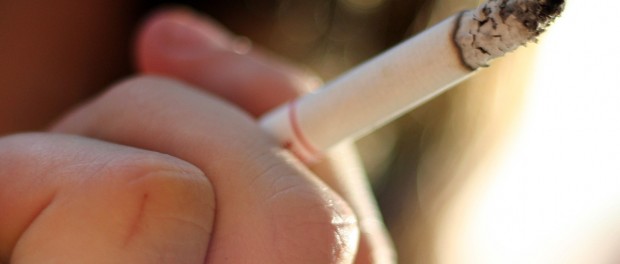Death and Disease in Every Stick
Despite the countless reminders and warnings issued to the public on the dangers of smoking and tobacco use, health problems associated with cigarette smoking continue to persist.
In 2006, the Department of Health (DOH) in the Philippines reported cerebrovascular diseases, pneumonia and tuberculosis (all forms) as the leading causes of mortality, and smoking was the high risk factor for these illnesses. The 2009 data showed that there were 17.3 million Filipino smokers, and around 23.9 million Filipinos were exposed to secondhand smoke. According to that study, an average of 10.6 cigarettes was smoked daily. In a more recent report, the World Health Organization (WHO) found that approximately 87,600 Filipinos die yearly or at least 240 die daily due to smoke-related illness in 2011.
Every stick of cigarette is a fasting acting toxic mix of tobacco and additives such as humectants, flavor, ammonia; and chemicals such as nicotine and tar. These toxic substances travel inside the body and affect organs within 10 seconds.
A single stick of cigarette when puffed, immediately affects the body. The toxic chemicals inhaled from the cigarette smoke is absorbed into the bloodstream and travels throughout the entire body. Nicotine, carbon monoxide and other harmful substances enter through the mouth and throat which may cause smelly breath, colds, phlegm, wheezing, sore throat, and throat infections which may gradually lead to cases of dental and gum disease, and mouth, larynx, or esophagus cancer. These toxic chemicals are also cancer-causing substances that cause the dysfunction of the cells that consequently affects the person’s hair, skin, nails, and immune system and may also result in hair loss, psoriasis, facial wrinkles, stained fingers, yellow nails, to more serious conditions such as leukemia and cervical cancer.
In seconds, these harmful substances reach the lungs, causing internal injuries and clogs that may lead to deadly lung conditions like pneumonia, bronchitis, emphysema, pulmonary diseases, and lung cancer. These toxic chemicals also affect the eyes instantly making it stingy and runny. It also increases the risk of developing cataracts that may lead to blindness. At the same time, the nicotine reaches the heart and might cause the hardening of the arteries, which will increase the heart rate and blood pressure, and may lead to cases of heart attacks, stroke, aneurism, and coronary heart diseases. Within seconds, the toxic chemicals cal also reach your muscle tissues. It narrows blood vessels, slow the blood circulation, and increases stomach secretions which may lead to ulcer, and cancer of the stomach, bladder, pancreas, and kidneys overtime. The brain muscles quickly react to the presence of these toxic chemicals too. Dizziness and headache take place. Researches also suggest that long-term smokers experience some memory loss, and a drop in overall cognitive skills.
When the body is used to a certain level of nicotine, mood shifts occur whenever the level of nicotine drops. Addiction takes place because the body develops a “need” to keep the nicotine levels up, and so craves another cigarette, and the vicious cycle goes on. So once you get ‘hooked’ or addicted to the nicotine, it becomes very difficult to stop smoking. Countless smokers want to quit smoking, but have found it very difficult, almost impossible to stop smoking.
Smoking is toxic and addictive, and can lead to deadly health risks. So save yourself from a life of misery and health problems — don’t even start smoking, or seek medical assistance to help you quit.
_____________________________
References:
– Action on Smoking and Health (2009). Nicotine and Addiction. Action on smoking and health Fact Sheets. http://ash.org.uk/files/documents/ASH
– Action on Smoking and Health (2009). Smoking and Eye Disease. Action on smoking and health Fact Sheets. http://ash.org.uk/files/documents/ASH
Disclaimer. This website is intended for informational purposes only and is not intended to render medical advice. Any information provided on HealthyLife Online should not be used for diagnosing or treating a health problem or disease. It is not a substitute for professional care. If you suspect a health problem, you should consult a medical professional or your health care provider. Do not disregard professional medical advice or delay seeking professional medical advice because of something you may have read on this website. The website does not recommend nor endorse any specific tests, products, procedures, opinions, or other information that may be referenced in the Website.

